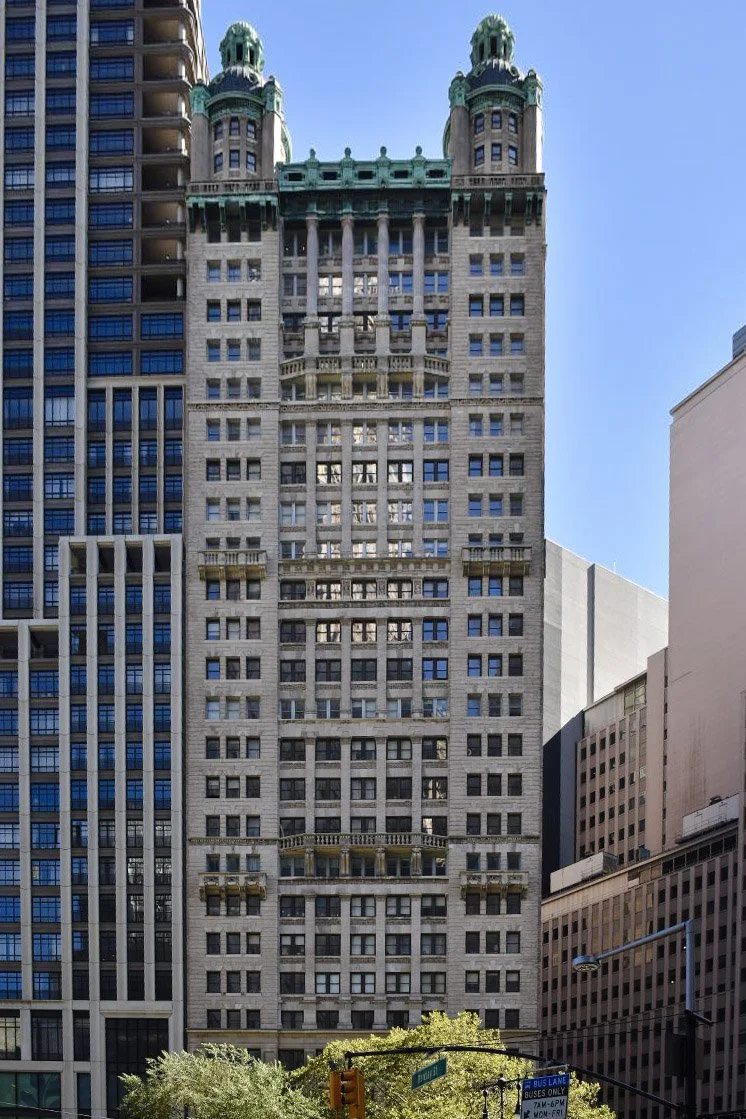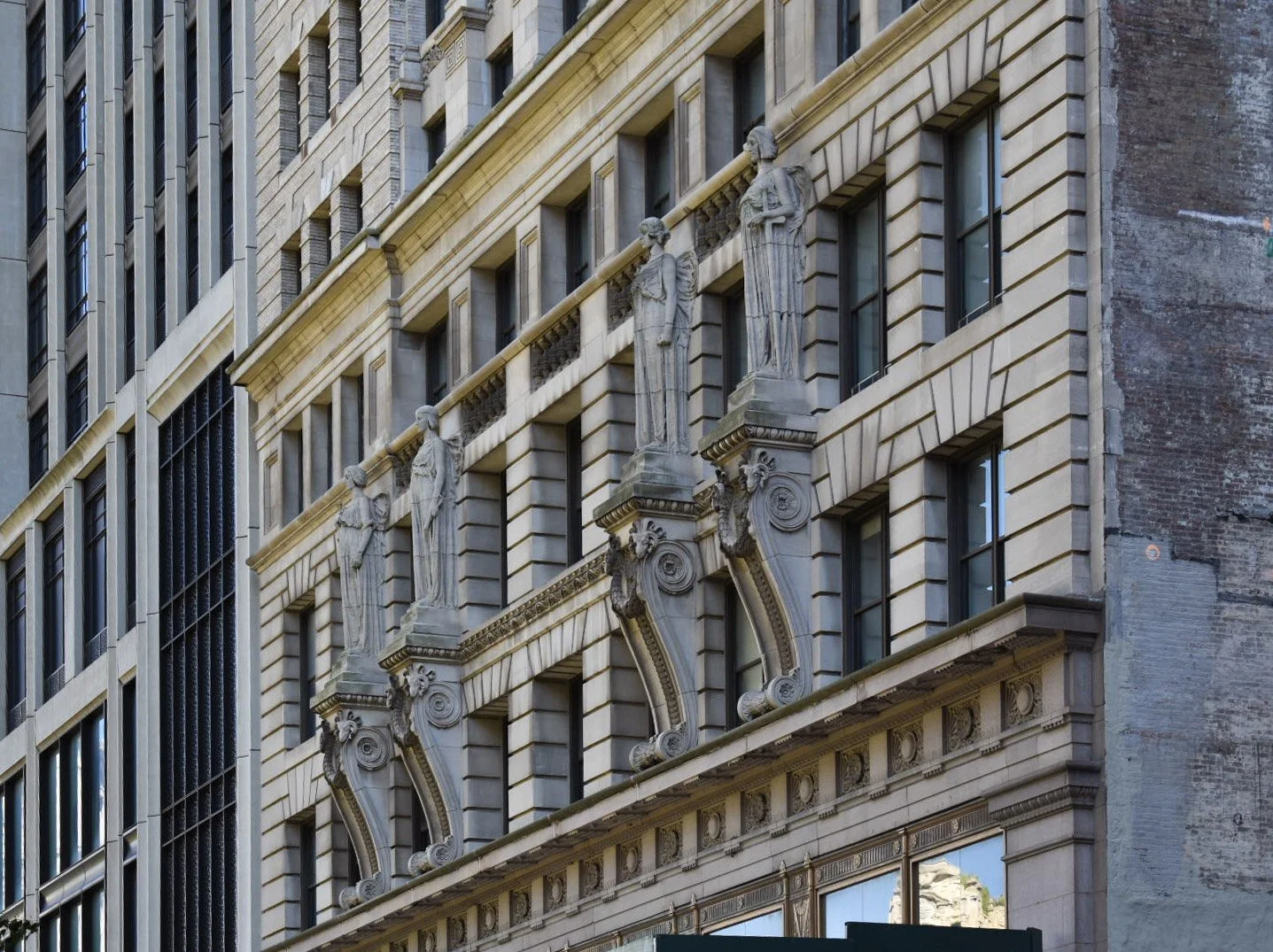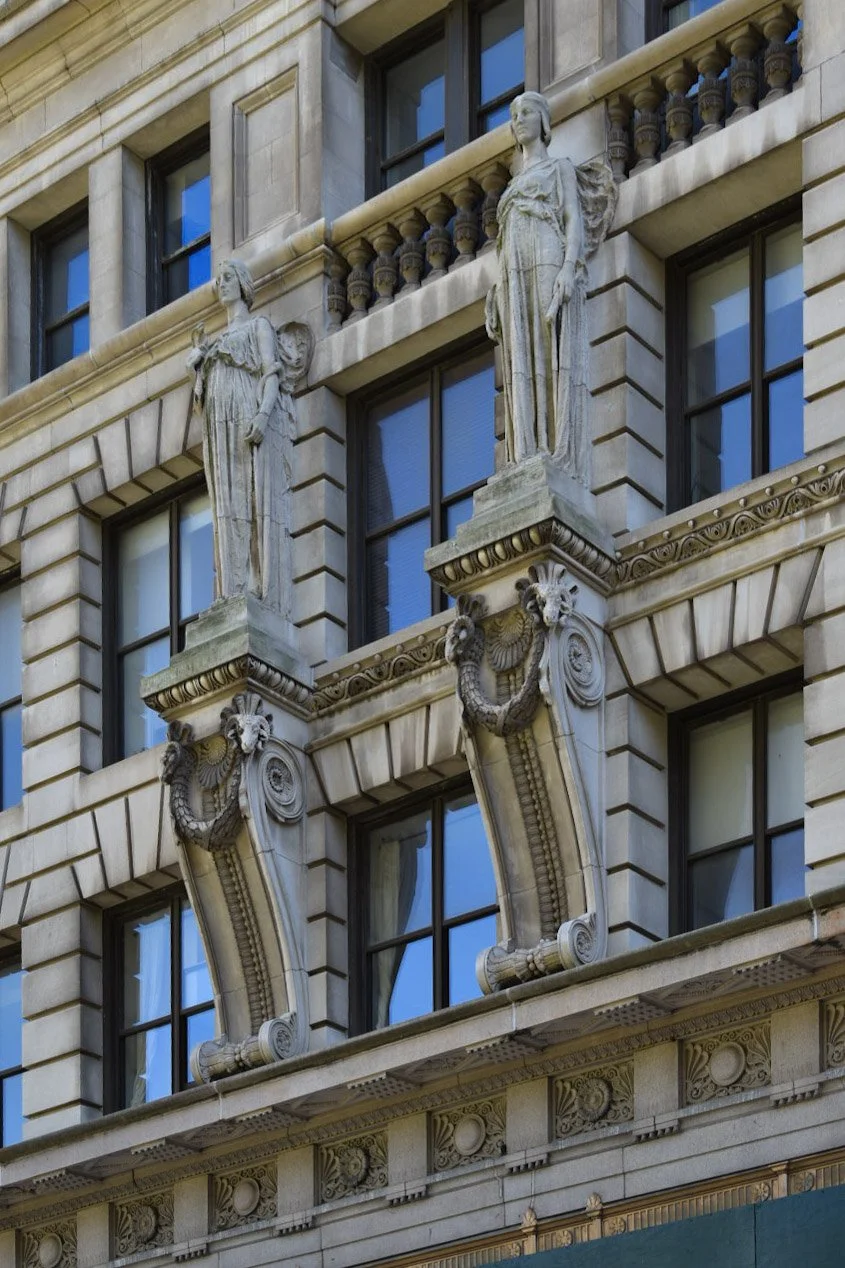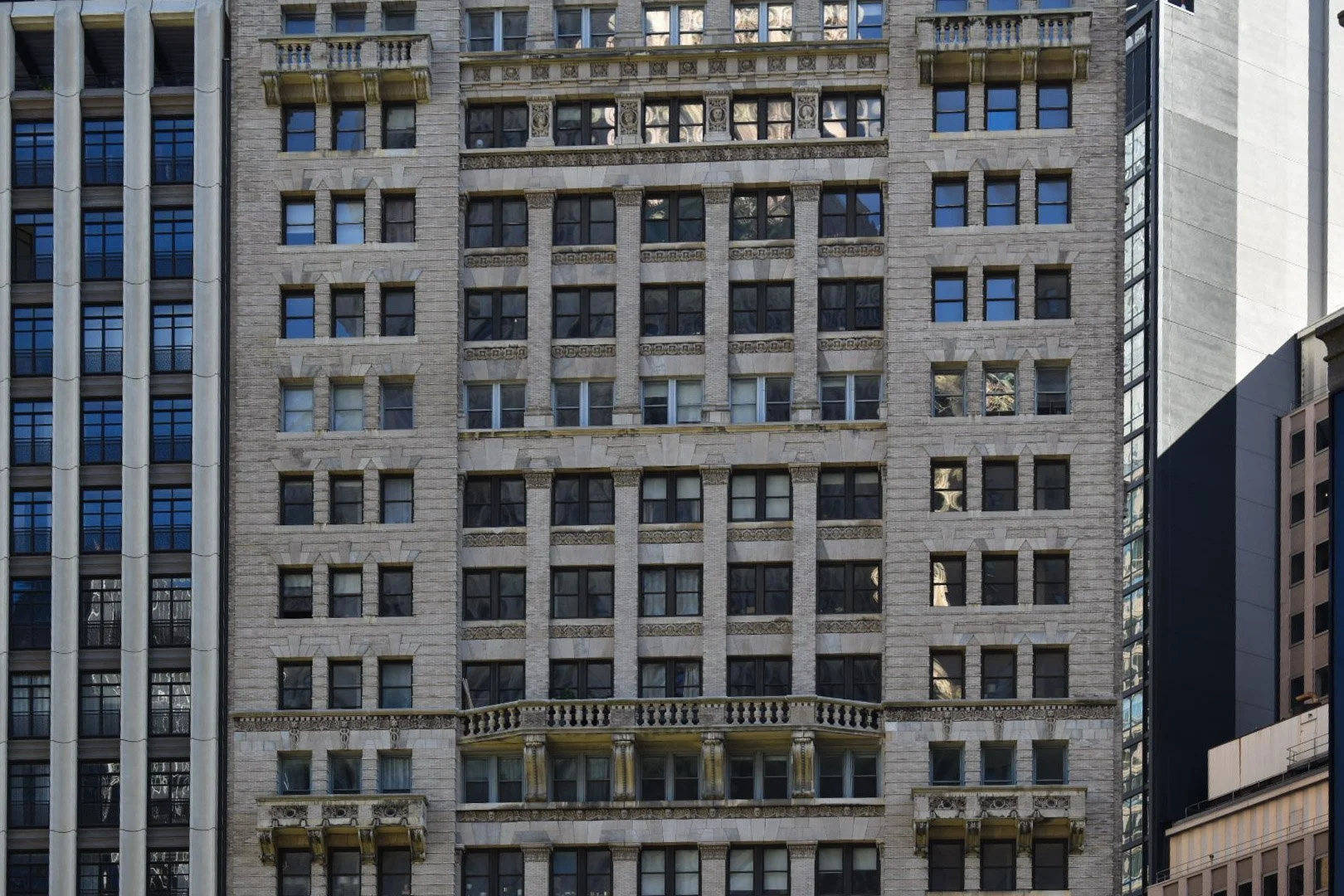15 Park Row
One of my first office jobs was in Downtown Manhattan. As part of my commute, I’d wait for the bus at a stop near City Hall. Across from the bus stop was this building. The two round towers at the top immediately captured my gaze – “How cool would it be to have 360-degree views of Downtown!” I thought (though now a quarter of those views have been blocked by new developments). Though I have yet to set foot in those coveted towers, the green, oxidized copper finishes, beautiful masonry work, and various balconies continue to captivate me. So allow me to share the lengthy history and design of 15 Park Row.
Completed in 1899 and standing at 391 feet tall, 15 Park Row was a forerunner to the dizzying height records set by the skyscraper race of the 1910s and 1920s. 15 Park Row was New York City’s tallest building from its completion until 1908 when the Singer Building surpassed it. The building’s silhouette, with the two round towers at the summit, was easily distinguished by ships arriving in New York Harbor. Initially designed to be used as office space for the various publications of what was then known as Newspaper Row, the building’s tenants included the Associated Press and the Interborough Rapid Transit Company (predecessor to the MTA), with an estimated 20,000 people passing through its doors each day. Today, the building features 339 luxury apartment units and ground-floor retail.
Among the most distinguishing features of the building are four sculpted figures set on the third story of the building. The four female figures, attributed to sculptor J Massey Rhind, represent aspects of commerce. Rhind’s other architectural works include female figures on the façade of the American Surety Building at 100 Broadway, the north bronze doors at Trinity Church, The Cable Building (611 Broadway), and the “Victory” and “Peace” statues at Grant’s Tomb.
Architect R. H. Robertson utilized a number of classical elements, including four columns and pilasters in the middle of the building, which run from the base to the top floor. In addition, 15 Park Row features several ornamental balconies. The building’s façade utilizes granite from the third to the fifth story and limestone, brick, and terra cotta from the sixth to the twenty-sixth stories.
Atop the building sits two four-story towers clad in stone and copper capped by ornamented domes. Like most copper structures (the Statue of Liberty, the roof of 40 Wall Street), the oxidized green color adds a degree of character emblematic of New York City’s pre-war structures. Each tower is flanked by four piers at each corner, separating the round tower into four sections consisting of three bay windows each. In addition, each dome contains round windows framed in oxidized copper and a small cupola at the top, with statues also crafted by J Massey Rhind.











